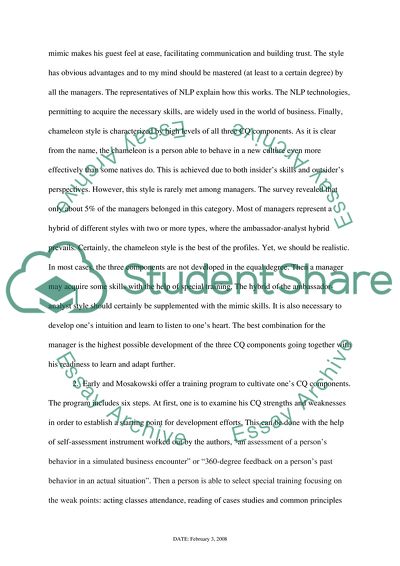Cite this document
(“Six Cultural Intelligence Profiles Essay Example | Topics and Well Written Essays - 1000 words”, n.d.)
Retrieved from https://studentshare.org/social-science/1544337-case-study-ob-class
Retrieved from https://studentshare.org/social-science/1544337-case-study-ob-class
(Six Cultural Intelligence Profiles Essay Example | Topics and Well Written Essays - 1000 Words)
https://studentshare.org/social-science/1544337-case-study-ob-class.
https://studentshare.org/social-science/1544337-case-study-ob-class.
“Six Cultural Intelligence Profiles Essay Example | Topics and Well Written Essays - 1000 Words”, n.d. https://studentshare.org/social-science/1544337-case-study-ob-class.


